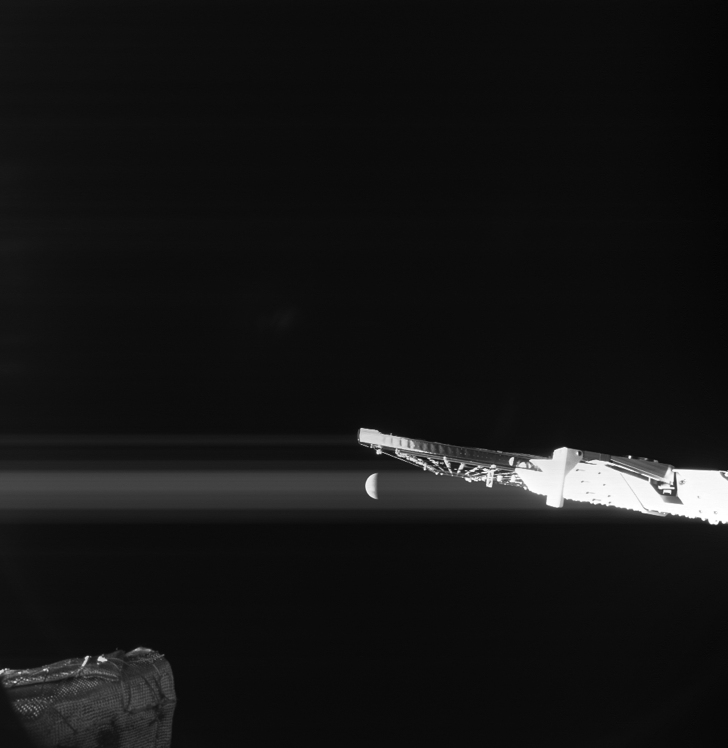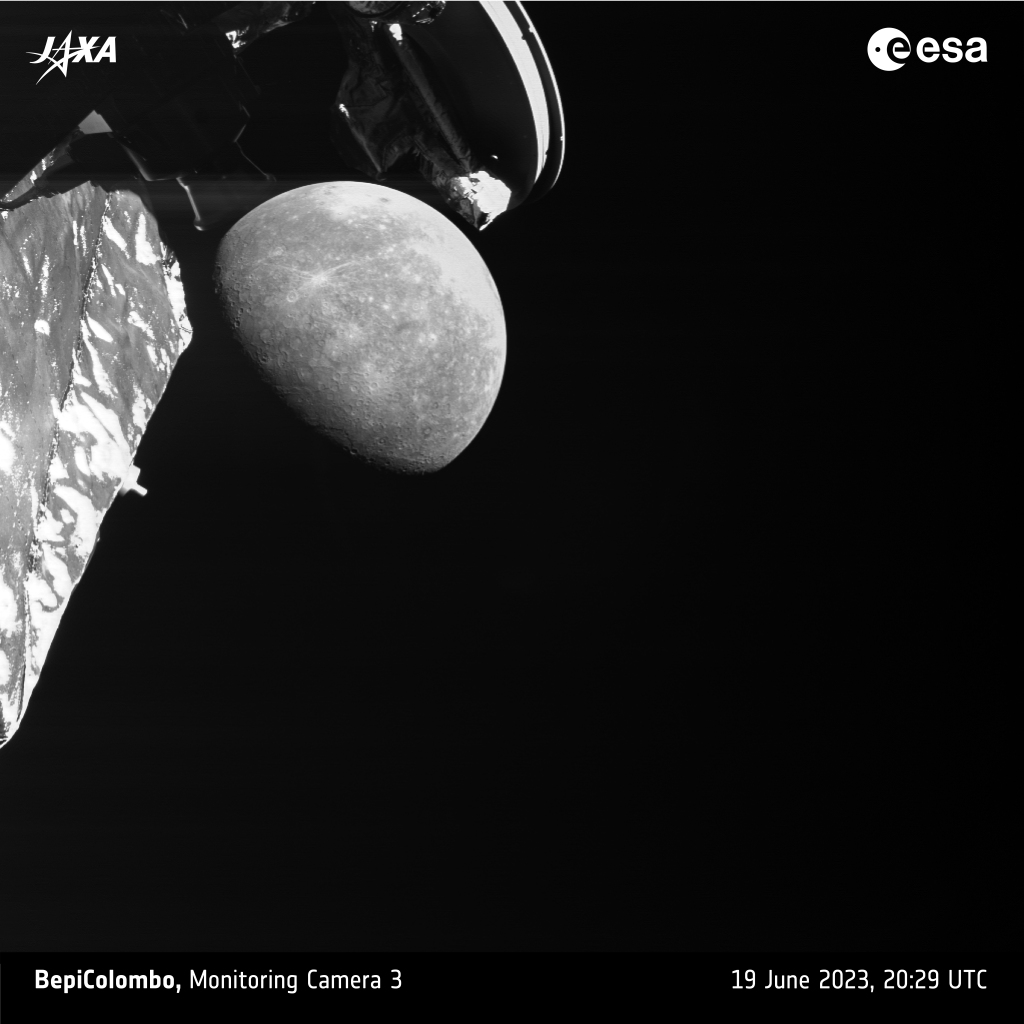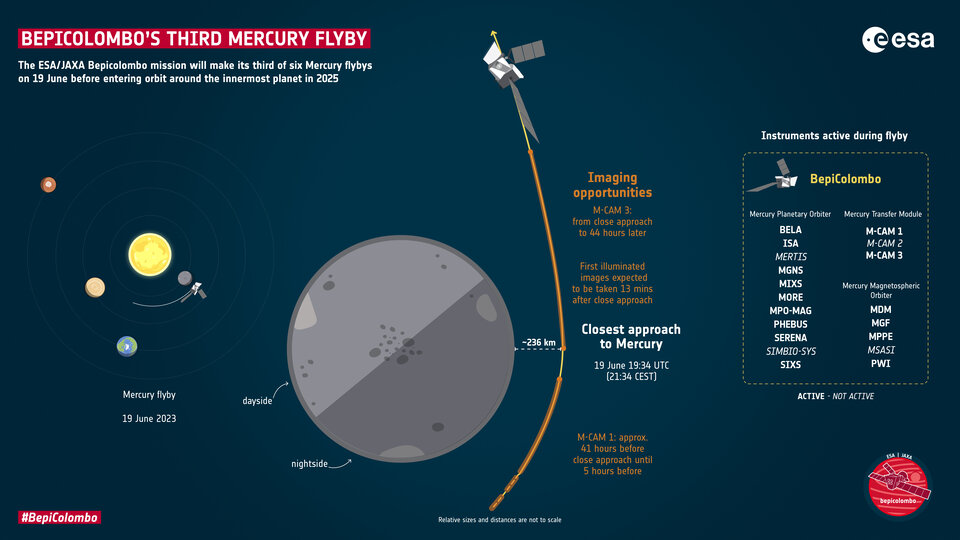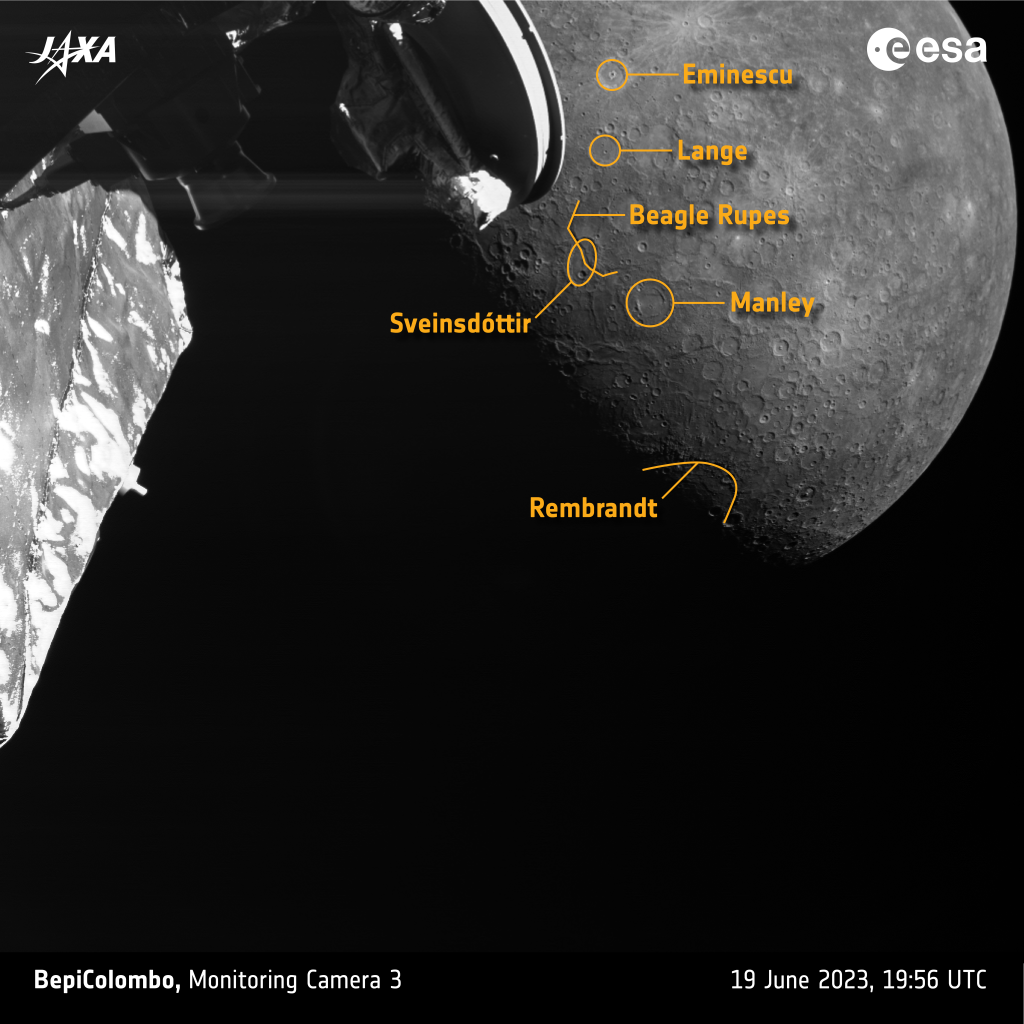
Just hours ago, the teams operating BepiColombo, Europe and Japan’s mission to travel to and orbit Mercury, released images from the spacecraft’s third flyby of the closest planet to our sun. With each pass, the spacecraft gets closer, takes more images, and reveals never-before-seen views of the elusive rocky surface.
Because Mercury is in an orbit closer to the sun, telescopes on Earth are unable to make detailed observations with the sun being so close in proximity. This leaves Mercury to nearly never be visible when the sun is below the horizon; and if so, it’s only for a brief moment.
In an effort to learn more about the small, rocky planet, researchers and scientists at the European Space Agency, in collaboration with Japan, launched the BepiColombo spacecraft on an Ariane 5 in 2018. The spacecraft made its first flyby on October 1, 2021, its second on June 23, 2022, and it’s third on June 19, 2023.
Third Flyby
The latest close pass of Mercury occurred exactly at 19:34 UTC on June 19, 2023, at an altitude of about 236 km (146 mi). Images were captured by two cameras on the Mercury Transfer Module, M-CAM 1 and M-CAM 3. M-CAM 1 was to take images until about 5 hours of the closest approach. M-CAM 3 was to take images just a couple hours after the closest approach once the daylight side of Mercury became visible.

So far, only three images have been released, less than 24 hours after the closest approach, of the partially illuminated planet from M-CAM 3. The first of these images was reportedly taken only 12 minutes after the closest approach.
Join our Discord Server: Join the community with forums and chatrooms about space!

Craters
This flyby allowed for a visual of the newly named Manly crater after artist Edna Manley. Leading into the flyby, the crater did not yet have a name. What was revealed was that the impact crater has low reflectance material, an artifact of Mercury’s early life with a carbon-rich surface. More can be explored once the spacecraft finally enters orbit in 2025.

Science and the Future
While these images are visually appealing, numerous science instruments were also switched on during the flyby. They recorded data on the magnetic and plasma qualities of the area surrounding Mercury, an area that will not be accessible once in orbit.
The next flyby will take place on September 5, 2024, but not after “thrust arcs” are performed to help slow the spacecraft down in order to enter an orbit around Mercury. These thrust arcs are prolonged periods of solar electric propulsion. In short, the propulsion system converts electricity from the sun, collected by the solar panels, into thrust.
This flyby also marks the halfway point for Mercury flybys. A total of six will be completed before the spacecraft enters orbit in 2025.
FTC: We use income earning auto affiliate links. More.




Comments